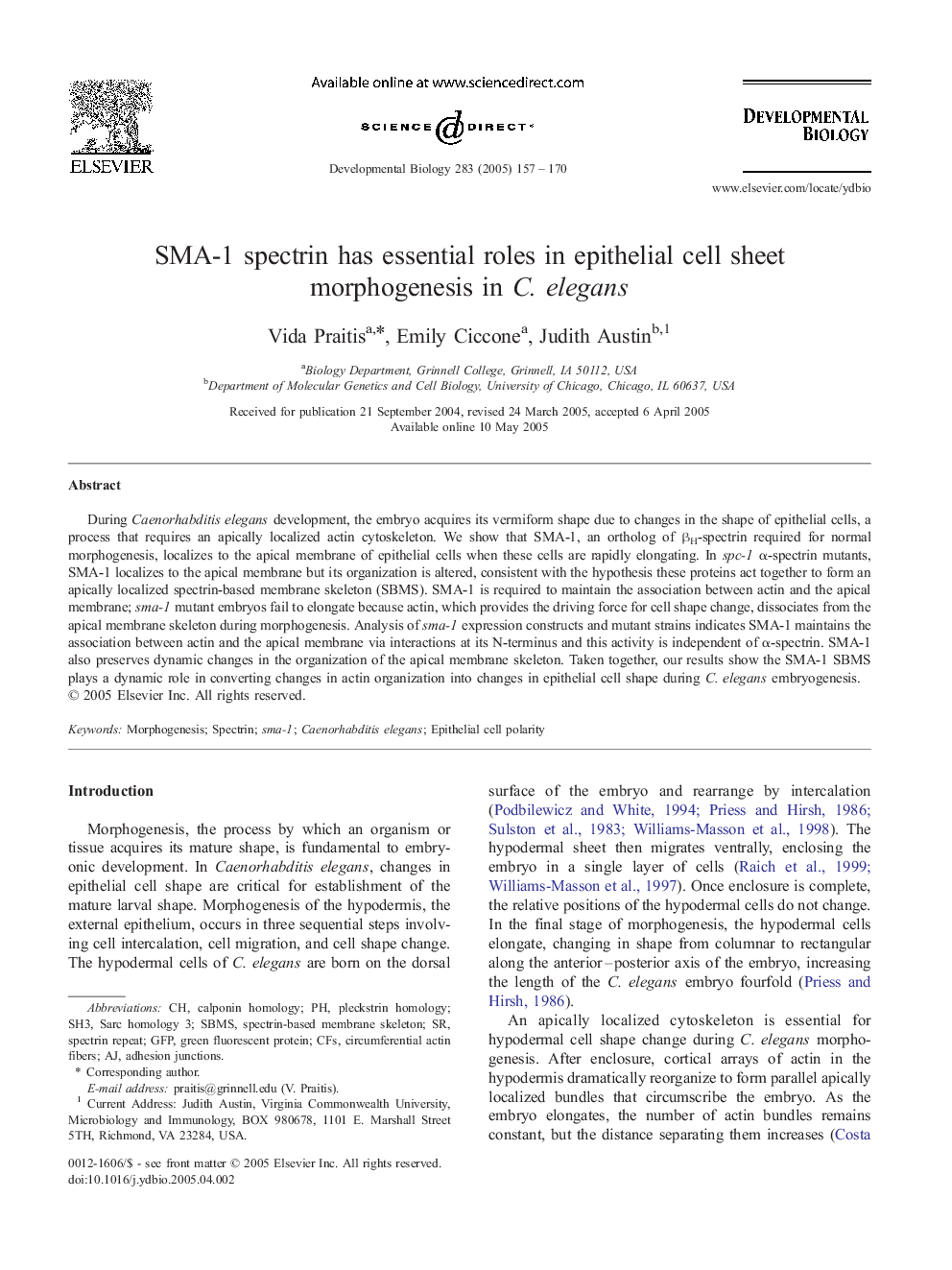| Article ID | Journal | Published Year | Pages | File Type |
|---|---|---|---|---|
| 10934102 | Developmental Biology | 2005 | 14 Pages |
Abstract
During Caenorhabditis elegans development, the embryo acquires its vermiform shape due to changes in the shape of epithelial cells, a process that requires an apically localized actin cytoskeleton. We show that SMA-1, an ortholog of βH-spectrin required for normal morphogenesis, localizes to the apical membrane of epithelial cells when these cells are rapidly elongating. In spc-1 α-spectrin mutants, SMA-1 localizes to the apical membrane but its organization is altered, consistent with the hypothesis these proteins act together to form an apically localized spectrin-based membrane skeleton (SBMS). SMA-1 is required to maintain the association between actin and the apical membrane; sma-1 mutant embryos fail to elongate because actin, which provides the driving force for cell shape change, dissociates from the apical membrane skeleton during morphogenesis. Analysis of sma-1 expression constructs and mutant strains indicates SMA-1 maintains the association between actin and the apical membrane via interactions at its N-terminus and this activity is independent of α-spectrin. SMA-1 also preserves dynamic changes in the organization of the apical membrane skeleton. Taken together, our results show the SMA-1 SBMS plays a dynamic role in converting changes in actin organization into changes in epithelial cell shape during C. elegans embryogenesis.
Keywords
Related Topics
Life Sciences
Biochemistry, Genetics and Molecular Biology
Cell Biology
Authors
Vida Praitis, Emily Ciccone, Judith Austin,
